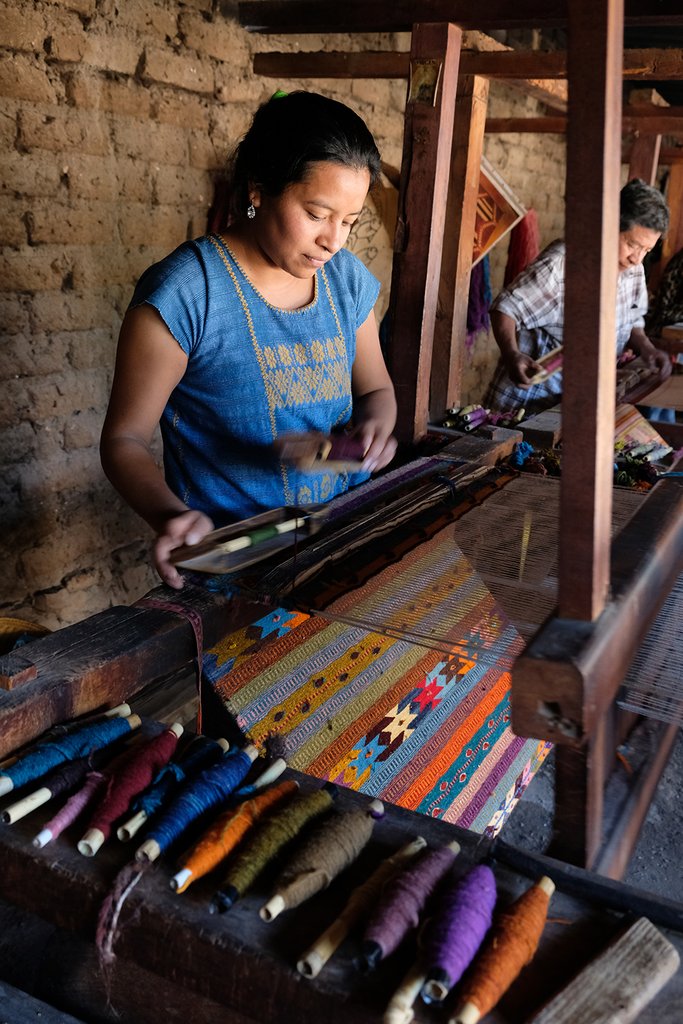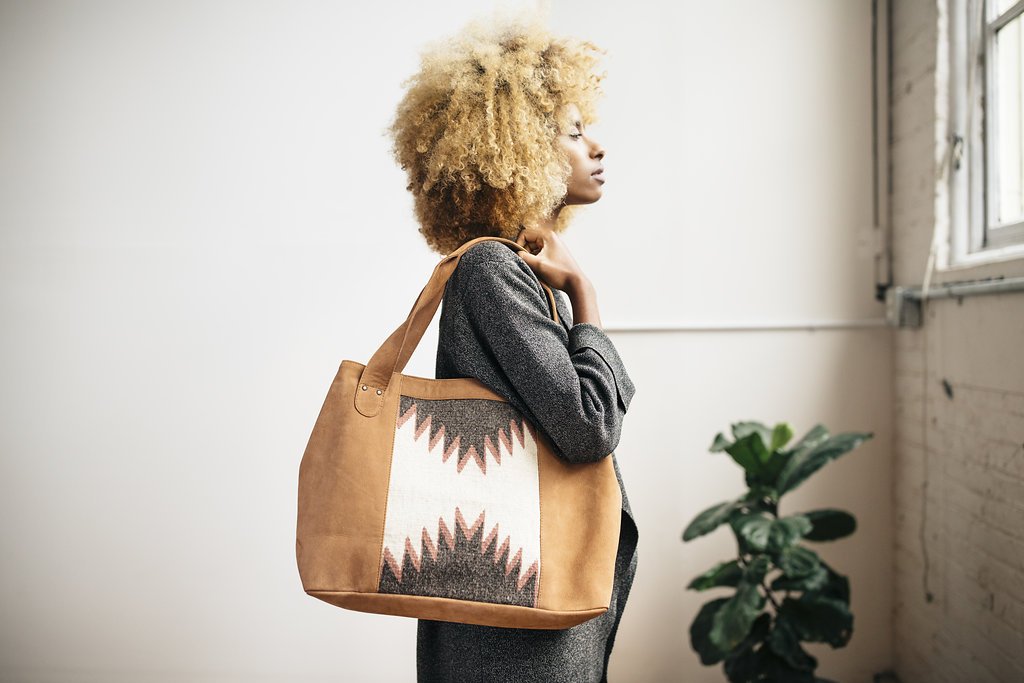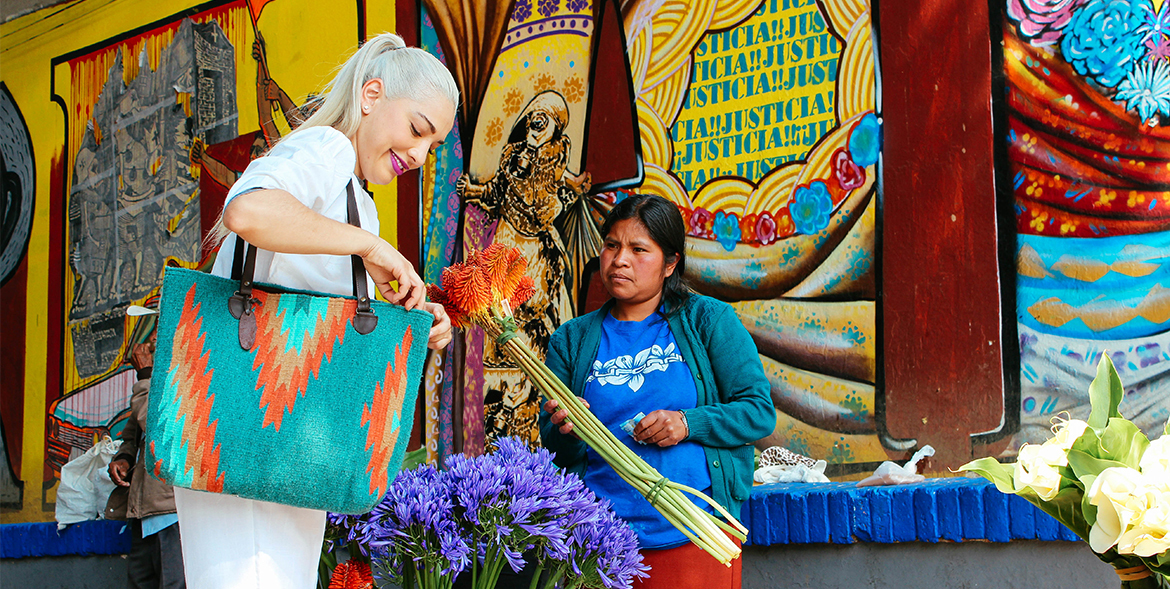We have been fortunate to get a glimpse at some really interesting business models through Impakter, that seek to be successful primarily to lift the quality of life for their employees.
Manos Zapotecas is another profound company that keeps an upmarket feel in its products whilst staying humble and appreciative of its artisan workforce.
I spoke to Shelley Tennyson, CEO and Founder of Manos Zapotecas, to further uncover the meaning and mission of her business.
Q: How did Manos Zapotecas come to life?
Shelley Tennyson: Manos Zapotecas was born out of a long term volunteer experience I had in Oaxaca, Mexico starting in 2009. I worked with a microfinance program called EnVia that provided no interest loans to women in some of the indigenous villages near Oaxaca. I became friends with many of the Zapotec women artisans in Teotitlan del Valle, and thought I could have an economic impact by starting a fair trade import business to sell their hand woven rugs and bags. The business officially started in 2011, and has been growing ever since.
Q: What does the journey from a Zapotec bag look like, from initiation to sale?
ST: Once the artisan family receives an order, which is usually for several bags going into our inventory, they prepare one of their looms for weaving. Most families have 3 or 4 of these large wooden looms in their homes. The skeins of wool must first be dyed in large metal tubs over an open fire, and the dyeing method must be precise in order to get the correct colors. The dyed wool is then wound on small bobbins using a spinning wheel, because each color used in the bag must have its own bobbin. The weaving process is complex, with several bobbins going at one time to achieve the correct pattern.
When the weaving is complete, it is cut off the loom, carefully picked clean, and sewn in the shape of the bag. It then goes to the leather workshop to have any handles and trim put on, then back to the weaver for the lining and zipper. The finished bag is then taken to Paco, our Production Manager, who inspects it for quality control and ships it off to our US warehouse. Most bags come in as inventory, and are sold both wholesale and retail out of our US warehouse in California that are all managed by a warehouse management software to stay properly organized.

In the photo: Vicki working on a loom with a colorful array of fabrics Credit: Manos Zapotecas
Q: What are the challenges faced in this journey? And what are the opportunities and the impact created along the journey?
ST: We have overcome many supply chain challenges, because we are working with hand made items made in homes rather than a factory. Much has to do with timing and management. Each artisan family manages their own orders, and must make sure that they have sufficient supplies as orders come in for their bag designs. They must think about what needs to be accomplished week by week in order to make their due date, and sometimes they must seek additional labor outside their extended family in order to get things done. They must make sure the leather workshop has enough time to work on their bags, and that they have enough time to do the finishing work once the bag comes back.
Our shipper must do quality control on all items and make sure all items in an order are correct (sometimes several hundred bags). He must also make sure that all customs forms are properly filled out prior to shipping, and then he has to deliver all bags to the UPS office in Oaxaca City which is 40 kilometers away. Roads are sometimes flooded or blockaded by the many union strikes that plague that area.
After many years we have minimized the problems and most production goes quite smoothly.

In the photo: A bag from the Lujo collection Credit: Manos Zapotecas
Q: How has your experience been so far and how does the future of Manos Zapotecas look like?
ST: It’s been quite a ride for someone who forgot to retire at age 65. I have learned more than I thought possible, and the best part is going to the village, visiting the families, and seeing the beautiful work that everyone is doing. We have about 50 families working on our products! I credit our success to them and also to our very small staff of young women who have taught themselves how to develop and drive a successful ecommerce business. Because of them our market has been expanding and our brand has become fairly well known. I believe we are becoming a major player in the world of fair fashion accessories and home décor.

In the photo: An artisan putting her husband to good use Credit: Manos Zapotecas
Q: How can fair trade become a given and what are the obstacles that are prevailing?
ST: Through relentless education of the general public, fair trade has become more and more accepted as necessary and important. Younger people, especially, are becoming more aware. Manos Zapotecas is a member of the North American Fair Trade Federation, and we are constantly posting fair trade stories, blogs, and publicity for other fair trade companies. Others are doing the same.
The obstacles are the love, especially in the US, of cheap products made in sweatshop factories and sold for next to nothing. Many people fill their closets with stuff they wear only once or twice. But I feel hopeful that awareness is spreading of how this practice is bad for the earth and bad for humanity. We are doing our best to help with this education process, and to provide products that are produced fairly and will last a lifetime, and can be used over and over again.
Editors Note: The opinions expressed here by Impakter.com columnists are their own, not those of Impakter.com









